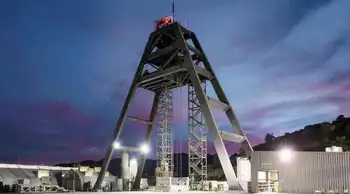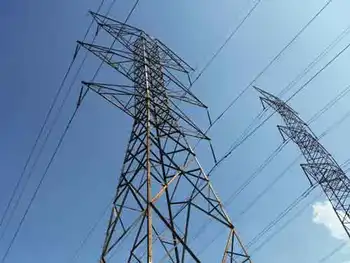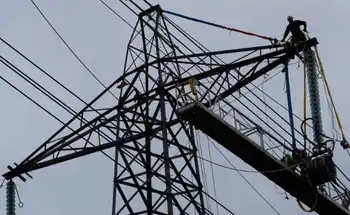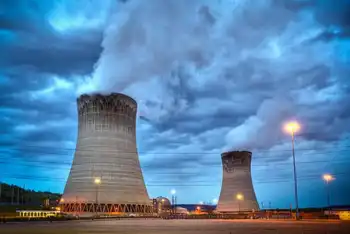Why daylight saving time is bad for the environment
By Toronto Star
Substation Relay Protection Training
Our customized live online or in‑person group training can be delivered to your staff at your location.

- Live Online
- 12 hours Instructor-led
- Group Training Available
Always sold as a conservation measure, the practice of daylight savings actually jacked electricity use in homes across one central U.S. state by up to four per cent, according to a new American study.
"If you could actually get energy savings and decrease carbon dioxide emissions just by adjusting the clock, that's certainly something we should at least consider," says Matthew Kotchen, a University of California-Santa Barbara economics professor who, together with a graduate student, combed over almost 8 million residential meter readings across Indiana to quantify the change in electricity use over three years.
The state offered a perfect case study: Up until 2006, only a handful of its counties pushed their clocks around at all. The vast majority, mostly rural farm communities where daily routines are still largely dictated by sunrise and not an electric clock, stuck stubbornly to standard time year-round. Then, two years ago, the entire state standardized their clocks and joined the daylight savings movement. That provided both a bulk of data and a control group.
The results? Instead of saving electricity and money by adding an extra hour of sunlight to evenings most of the year, it cost Indiana homes an extra $8.6 million in electricity bills – mostly from chugging air conditioners – each year. And since 95 per cent of that extra energy was generated by coal-fired power plants, that meant much more atmosphere-warming carbon dioxide was spewed into the air.
Expanded nationally, those results would translate to at least two coal-fired electricity plants pumping power just to feed the daylight savings habit.
"In Indiana, I can tell you unambiguously now, there are social and environmental costs associated with daylight savings time because of the pollution emissions and carbon dioxide emissions contributing to climate change," Kotchen says.
The irony is that daylight savings has always been promoted as an energy conservation measure; theoretically, one extra hour of natural light in the evening would erase an hour of electrical light. In 2005, when the American Congress voted to extend daylight savings by four weeks, pushing the start date back three weeks to today, it was advertised as saving Americans the equivalent of 100,000 barrels of oil daily. Ontario decided to follow suit for trade reasons.
"If we're staking our national policy on conservation on daylight savings, we're in big trouble," says Jeff Deyette, an energy analyst with the Union of Concerned Scientists in the United States. "This was one of the few victories of the energy bill of 2005 that otherwise was entirely focused on increasing supply."
The American Congress has promised to review the extension of daylight savings after the U.S. Department of Energy does an audit of its effect. Those findings should be presented by June, says department spokesperson Chris Kielich.
"If daylight saving time doesn't save energy, it's hard to find a cogent reason to continue the experiment," says Ralph Cavanagh, energy program co-director of the Natural Resources Defense Council.
Since first conceived of by Benjamin Franklin more than two centuries ago, the principle behind daylight savings has always been to save on lighting bills. But what the American inventor couldn't envision in 1784 was the rise of the power-sucking central air conditioner. In Indiana, people might not have been flipping on the lights when they returned home after work. But they were cranking their air conditioners, because that extra hour of evening sunlight meant another hour of "solar build-up on your house," says Kotchen.
"Take an hour at dawn versus an hour at sunset. When do you think you're going to run the air conditioner harder?"
Kotchen is now studying the effect of daylight savings on the rest of the country. He figures the air conditioning effect will be even more profound in southern states. And in the north, there is the opposite problem: waking up an hour earlier in the spring and fall means more time roaming around a cold house, rather than dozing under a duvet.
It likely has a similar effect in Ontario, where hot, humid summers are not unlike Indiana's, Kotchen says. On a hot summer day in Ontario, air conditioning can account for a quarter of our total electricity demand.
(A preliminary examination of the extended daylight savings hours last fall showed a very marginal reduction in electricity use – about 0.1 per cent, says Terry Young, spokesperson for the Independent Electricity System Operator, which manages Ontario's electrical system.)
Another way daylight savings might be fuelling our warming climate? Increased carbon dioxide fumes sputtering out of car tailpipes, says Michael Downing, author of Spring Forward: The Annual Madness of Daylight Saving Time. Last March's early spring forward coincided with increased gas prices at the pumps.
But the hikes had no effect on gas sales, a result dubbed by many analysts as the "daylight savings effect," he says.
"When you give people more light after work, they do go to the mall or ball park and they don't walk there. They get in their cars," says Downing, adding that in the 1930s, the petroleum industry lobbied hard to reintroduce daylight savings.
The practice was first introduced, temporarily, in the United States during World War I, and then again during World War II. In 1966, it was reintroduced across most of the United States and Canada, beginning the last Sunday in April and ending six months later in late October. Since then, it has been expanded twice.
While energy conservation has always been the window dressing, the true motivation was repeatedly economic, says Downing, who spent two years reading all the U.S. congressional and senate hearings on DST dating back to 1919.
"The most persistent lobby on behalf of daylight savings has long been retailers and merchants. If you give people more light when they leave work, they will stop and shop on their way home," says Downing, a writing professor at Tufts University.
"There is a reason we continue to get daylight savings under the rubric of energy conservation because as a policy, it costs individual consumers nothing and asks them to conserve nothing. So it's wildly popular," he says.
"Unfortunately, it's entirely ineffective."
Previous studies on daylight savings have had similar findings. But most have been based on simulation models, not concrete data. An exception was a study on the extension of daylight savings in two Australian territories for the 2000 Summer Olympic Games, which showed more electricity used.
But even that didn't dissuade the Australian government from introducing daylight savings to the western part of the country more than a year ago, says David Prerau, author of Seize the Daylight: The Curious and Contentious Story of Daylight Saving Time.
"Most people feel they are gaining an extra hour to do things in," says Prerau, adding other benefits include decreased traffic accidents, a more active population and a boost to the economy. "There's a lot of benefits that generally outweigh the negatives. Energy is just one of the impact areas."
A broader study would be needed to convince even Ontario's chief conservation officer, Peter Love, to include ending the practice in his campaigns to cut back Ontario's electricity usage. "Ontario, quite frankly, is not doing this for energy efficiency reasons," Love says. "We did it to be in sync with our major trading partner to the south," he says. "It's not something I'd want to do alone."











